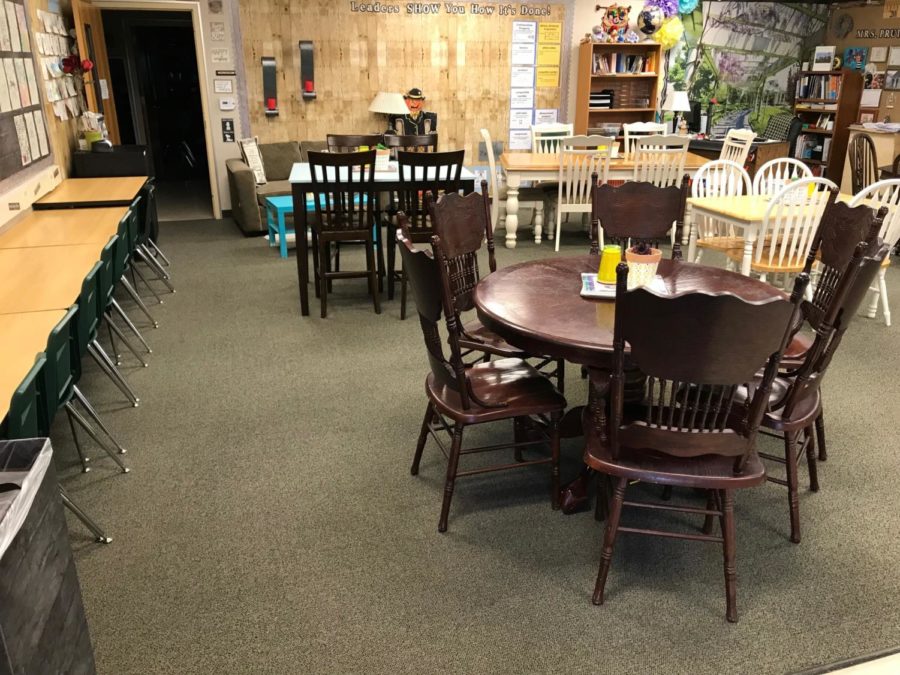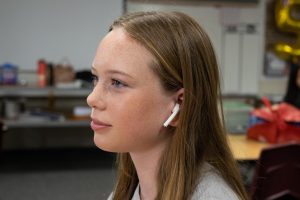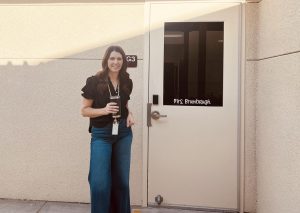Time to Change Seats!
With flexible seating, students can grow and succeed in their learning.
October 3, 2019
Imagine sitting at school in that hard plastic chair, listening to your Language Arts teacher talk about extended metaphor. Or maybe you’re in your math class learning about integers, proportions, and expressions. Either way, you’re probably wishing you could be at home. Maybe on a comfy couch, or nestled in a beanbag chair in your bedroom. With flexible seating, there is a possibility that these options can exist here.
Mrs. Pruitt, a Heritage Intermediate School teacher, has implemented this technique in her 6th-grade classroom. “I wanted to try it because I wanted to see if it changed behaviors in the classroom,” she said. This seating style works for Mrs. Pruitt and her class. For one, the style of dining room tables and chairs helps improve kids’ posture. The high backs of the chairs cause students to sit straight, whereas typical classroom chairs allow students to slouch.
“Opening up the classroom environment encourages greater collaboration, communication, and interaction between students and teachers alike,” said Justin Raudys in his article “Flexible Seating: 21 Awesome Ideas for Your Classroom.” Flexible seating encourages students to work alongside their teachers, while also facilitating peer-coaching where kids can easily help each other. “I’ve noticed that (with flexible seating) the kids have been doing a really good job of being helpful to each other instead of just giving straight out answers, and they’re being really good friends to each other,” Mrs. Pruitt said.
This alternative seating option reduces the amount of time that kids spend sitting. The British Medical Journal agrees: “Our recent body of work has identified time spent sitting as a risk factor for the development of chronic disease.” Different postures and positions of flexible seating allow students to learn without being glued to their seats.
“I think that flexible seating is really a good idea. Letting kids sit in bean bag chairs and be comfortable definitely helps the brain be more focused,” Assistant Principal Mrs. Kelley said. For instance, most kids would prefer doing homework in a beanbag chair, not the kitchen table. Lounging in a bean bag with a binder and a list of math problems is far more comfortable than solving expressions at the dining table. “I think (flexible seating) helps kids focus, and they can fidget if they’re stressed,” 8th grader Tori D. said.
When students voice their opinion about a certain seating option and they receive it, it brings changes that validate their input toward that learning environment.
“The kids would feel more empowered that this is their classroom, not Mrs. Keck’s classroom. It’s more ownership for them,” 7th-grade teacher Mrs. Keck said.
Flexible seating doesn’t just help students. It also benefits teachers. “Teachers can move around the room freely and easily connect with the students,” said Herman Miller. New teaching strategies are also available through the use of flexible seating. “(I’ve done) specific Kagan strategies, and I’ve seen a lot of great communications from student to student, lots of conversations using their vocabulary. They’re helping each other get really good answers,” Mrs. Pruitt said. This is easier on teachers, giving them more capability to help students learn.
One downside? Flexible seating is expensive. Swapping fifty classrooms of current desks and chairs is a huge financial commitment. We asked Mrs. Kelley if she would consider implementing this in one classroom here at Day Creek to see how it affected students. “If we had money in the budget, of course, I would fund it. But if we didn’t, one of the other options would be to allow teachers to visit classrooms that do have flexible seating to see how they could make that arrangement within their classroom,” she said.
With flexible seating, students can grow and succeed in their learning.






